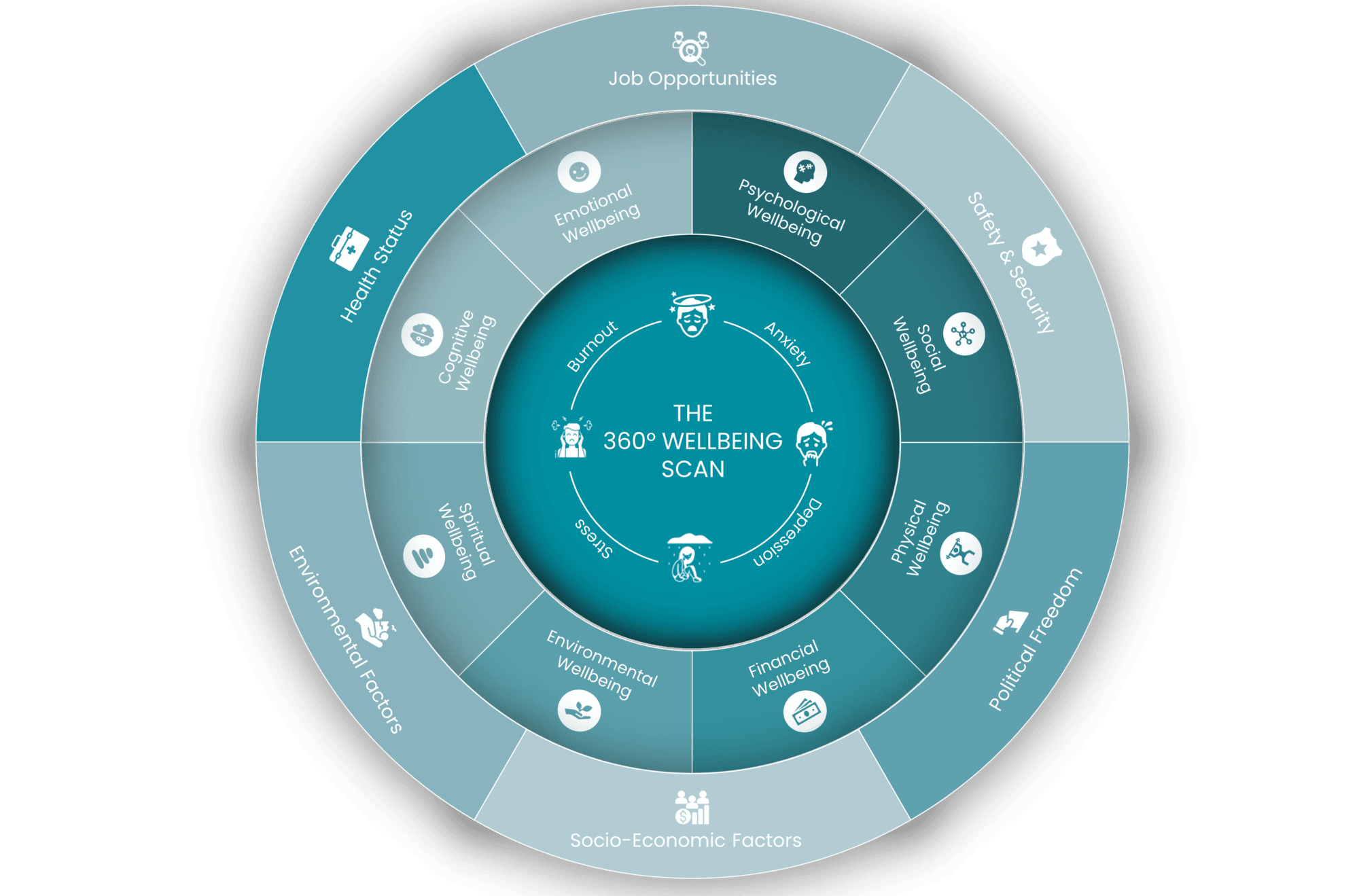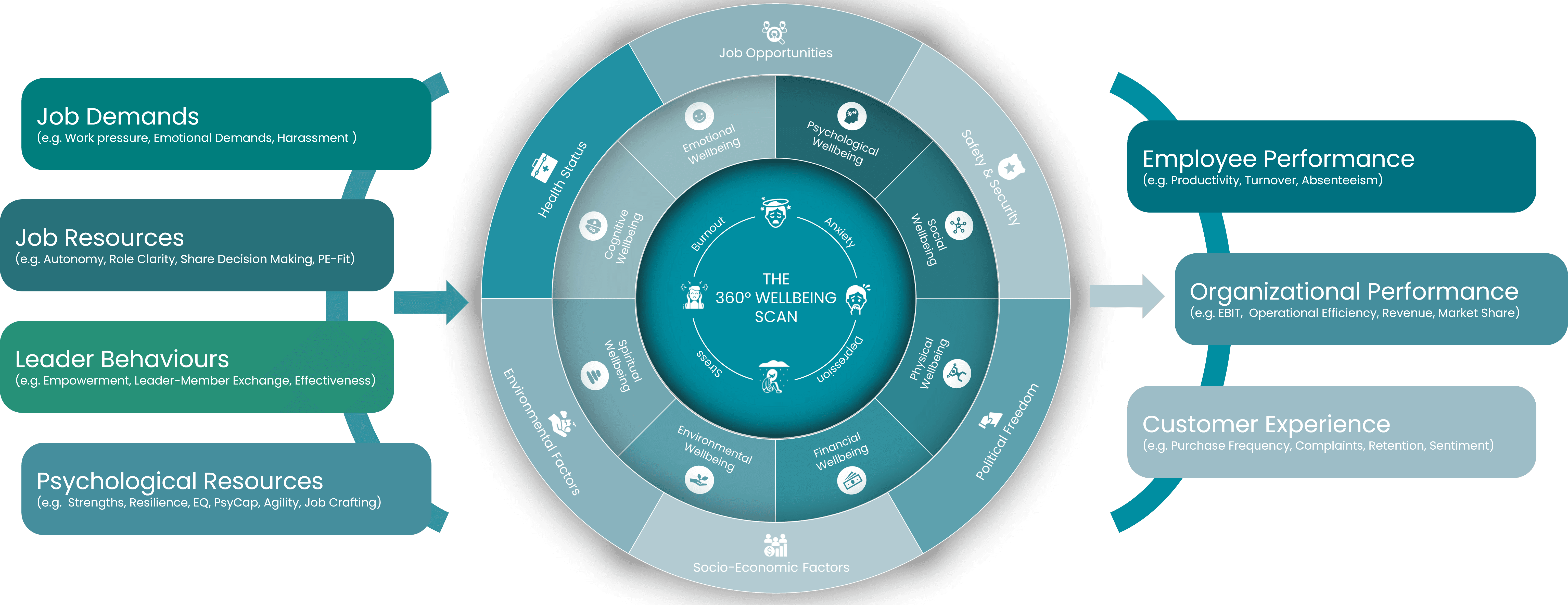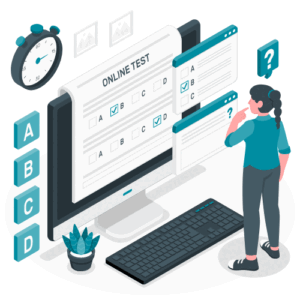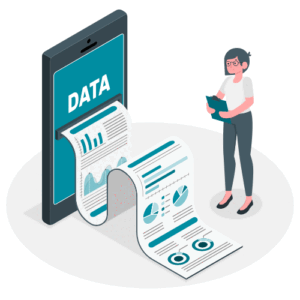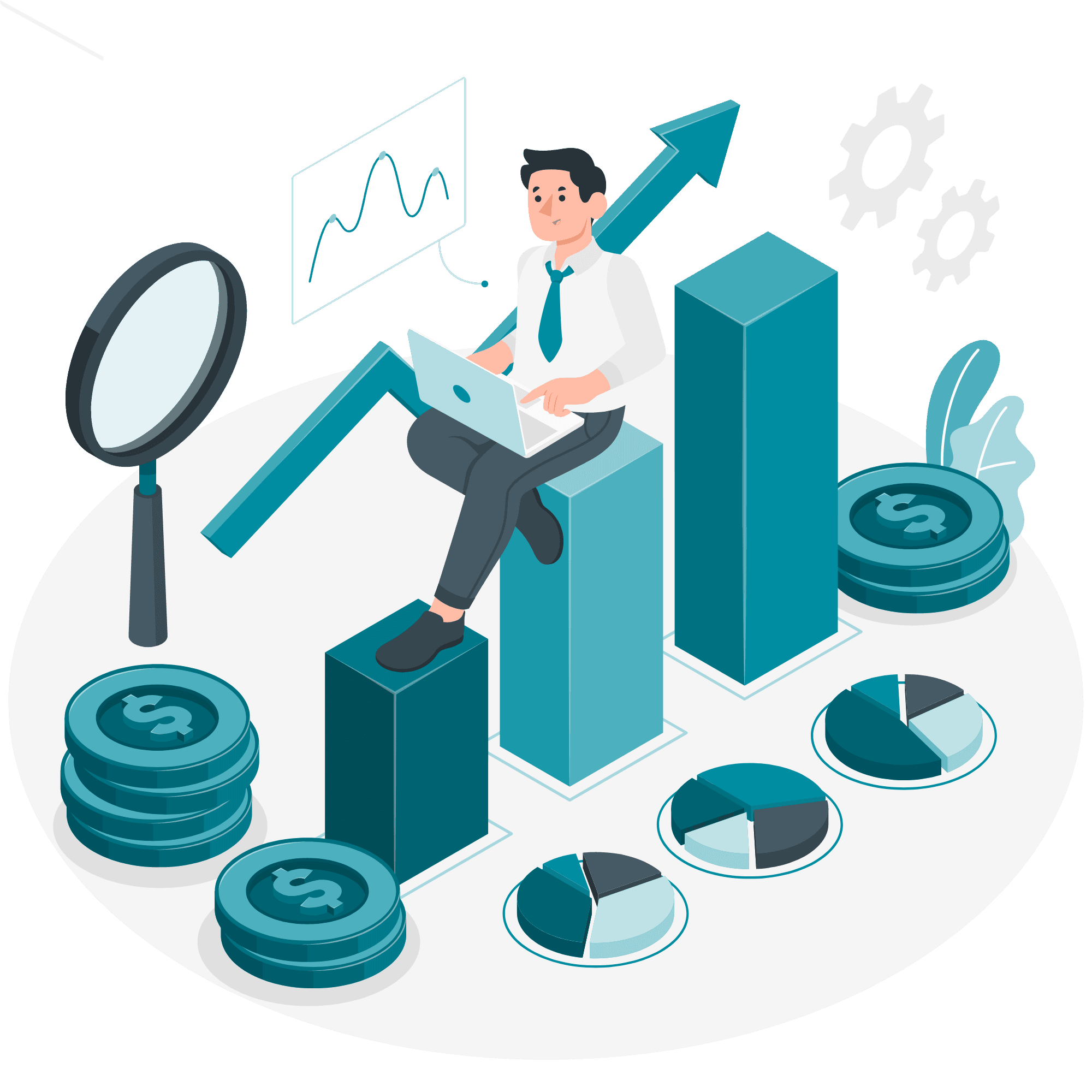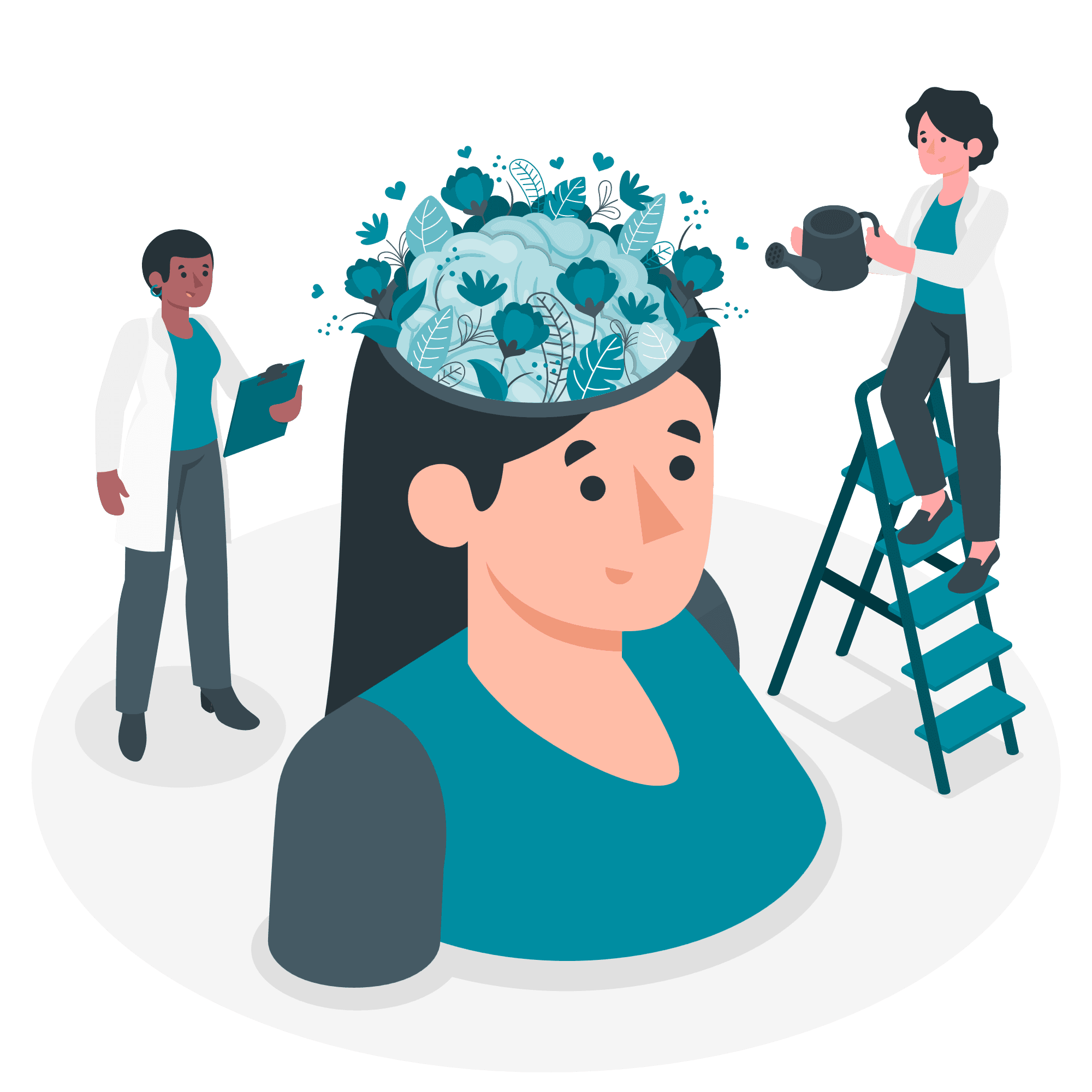What makes the 360º Employee Wellbeing Scanner Different
Our approach to employee wellbeing assessments goes beyond guesswork by combining self-reports with objective data to estimate wellbeing accurately.
We create personalized, bottom-up models that link employee wellbeing to hard performance metrics at both the individual and organizational level.
By showing the direct connection to financial outcomes, we provide actionable diagnostics, risk predictions, and real ROI—grounded in science and tied to your bottom line.
The 360 Wellbeing Scanner
What Makes Us Different
Our 360 Wellbeing Scanner is a holistic assessment tool that blends subjective experiences, objective data, and common mental health challenges into one cohesive model. Unlike traditional surveys that only capture surface-level feedback, we dig deeper by measuring everything from emotional and physical wellbeing to financial, spiritual, and cognitive factors. At the same time, we map these results against real-world performance metrics like absenteeism, turnover, local socio-economic indicators, and industry benchmarks. This comprehensive view reveals not just how people feel, but also the wider context shaping those feelings.
A key difference is our bottom-up approach, where employees provide open-ended reflections that our AI engine analyzes to highlight personal stressors, strengths, and resilience strategies. By merging that “on-the-ground” insight with top-down organizational data—such as revenue patterns, operational performance, or demographic stats—we’re able to pinpoint exactly which drivers of wellbeing are impacting which outcomes. It’s this holistic model that helps you see how financial insecurity might be fueling burnout or how a supportive work culture can offset high-pressure demands. Ultimately, you don’t just identify problems: you gain actionable intelligence that connects wellbeing to productivity, retention, and profitability—making it easier to address root causes and prove real ROI.
It was developed and validated using rigorous psychometric standards, ensuring every measure we use is both reliable and can provide meaningful insights. That means you can make data-driven decisions about people strategies and see exactly where interventions will have the greatest impact. Our model also flags who might be at risk for issues like burnout, so you can address problems early and avoid bigger consequences down the line.
Additionally, we provide individual, team, and group-level feedback. Individuals receive tailored insights they can act on, managers get a clear picture of team strengths and stress points, and leaders see how overall wellbeing connects to business performance. By taking this integrated approach, the 360 Wellbeing Scanner empowers you to create real change—improving employee health and delivering measurable results for your organization.

